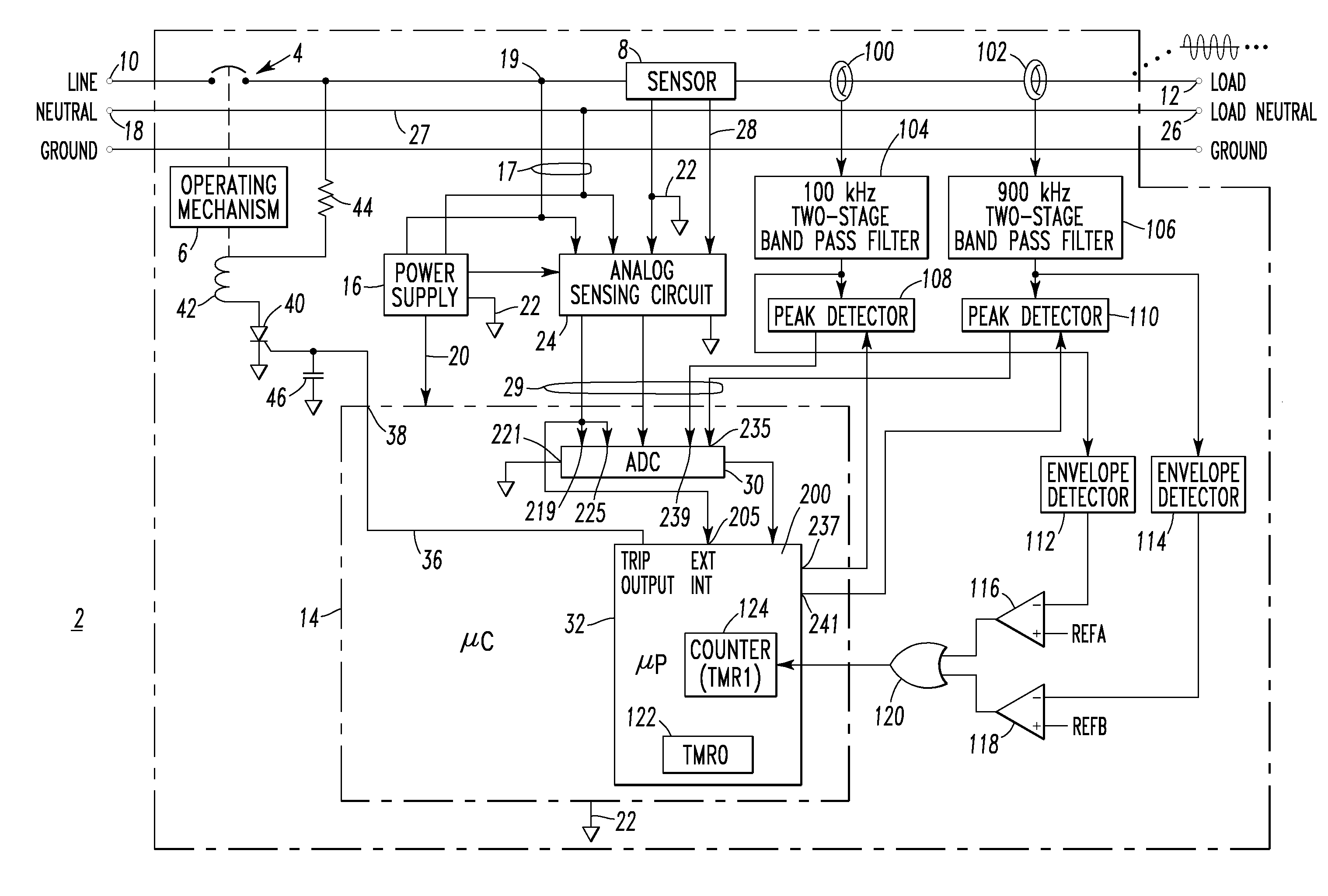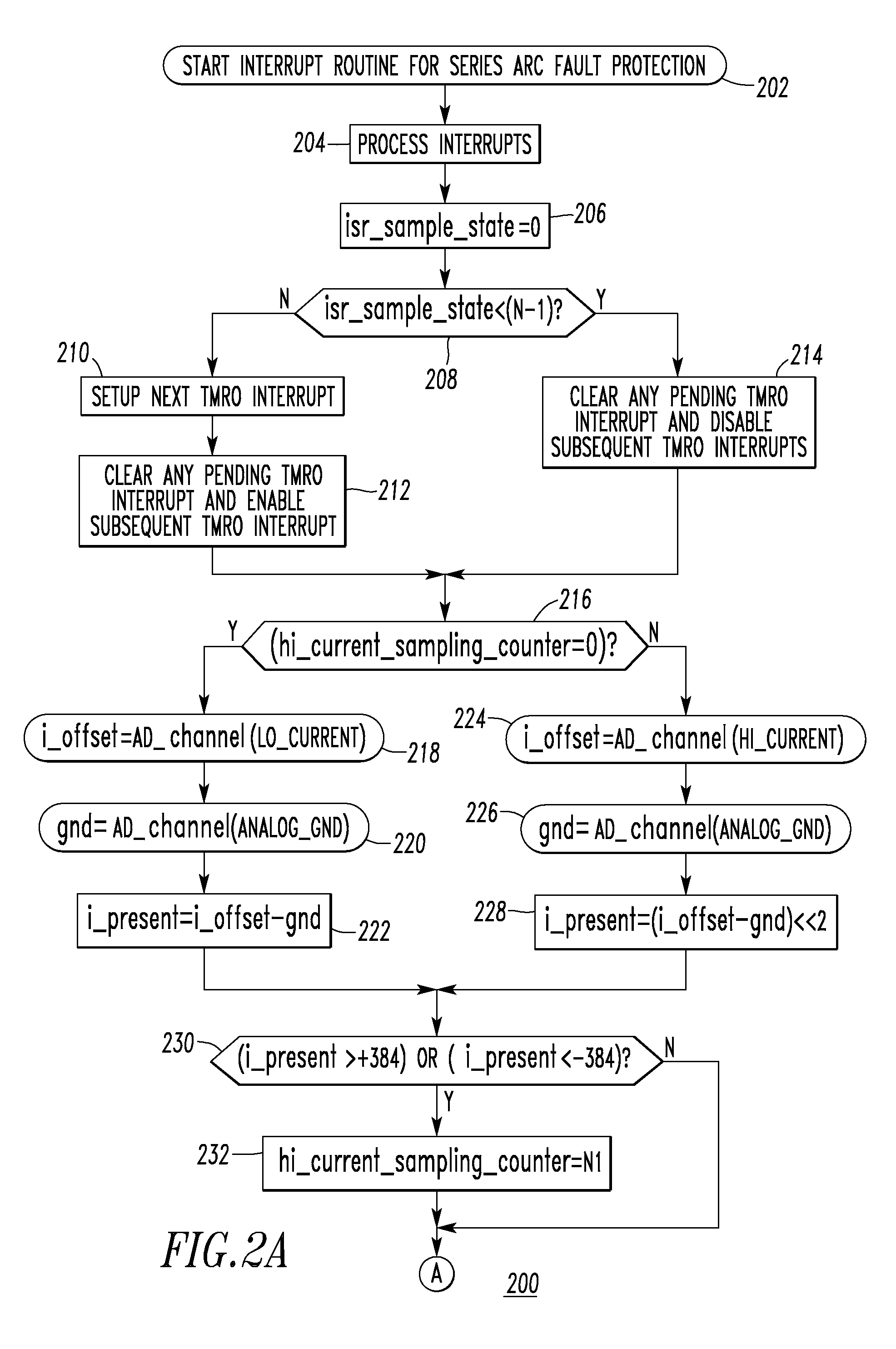Arc fault circuit interrupter and series arc fault detection method using plural high frequency bands
a fault detection and circuit interrupter technology, applied in the field of circuit interrupters, can solve the problems of poor electrical connection, small reduction of load current, and inability to overload the capability of a conventional circuit breaker
- Summary
- Abstract
- Description
- Claims
- Application Information
AI Technical Summary
Benefits of technology
Problems solved by technology
Method used
Image
Examples
example 1
[0045]Certain loads generate high frequency noise that has significantly high moving average baselines, especially during their start up. In order to eliminate nuisance tripping caused by these type of loads, series arc detection is preferably disabled for a predetermined time (e.g., without limitation, 1 second) if the first moving average or the second moving average is greater than a predetermined value (e.g., without limitation, for a chop saw, the moving average goes up significantly; the predetermined values for the first and second moving averages can be 160 and 140, respectively).
example 2
[0046]Line cycle (e.g., 60 Hz) wave shape information is preferably employed to provide adequate trip response to clearing time tests. This means that the trip response should be based on the load (e.g., 60 Hz) current waveform (not just the current peak value, but rather the rms value since some loads, such as a dimmer, may have a relatively high peak current value, but a relatively small rms value) and the required tripping time at different current levels in UL 1699. This checks the rms current value or the average rms current value of several cycles and finds the required tripping time. If the series chaos accumulator (series_accum of step 328 of FIG. 2E1) is greater than a suitable trip threshold (e.g., without limitation, the tripping bucket level of 300 counts) before the required tripping time (e.g., without limitation, 1 second at 5 ARMS), then wait without tripping the circuit breaker 2 until a predefined time (e.g., without limitation, 100 mS for this example) before the ...
example 3
[0063]Preferably, the μP 32 of FIG. 1 is structured to introduce “jitter” in the otherwise periodic data sampling times of the outputs of the peak detectors 108,110 as sensed through the respective ADC channels 239,235. One approach to eliminate repetitive high frequency signals generated by certain loads, such as dimmers, is to check if the variation between two adjacent peak values falls within a predefined range, such as 5%. If the variation falls within the predefined range, then the detected peak signal will not be counted as an arc fault generated signal. The “jitter” eliminates false series arc indication due to consistent large variations between two adjacent peak values caused by the periodic timer interrupt from the μP timer TMR0122. When the circuit breaker 2 protects a dimmer (not shown) and an incandescent lighting load (not shown), the high frequency pulse associated with the turn-on of dimmer current occasionally coincides with the time when the high frequency peak de...
PUM
 Login to View More
Login to View More Abstract
Description
Claims
Application Information
 Login to View More
Login to View More - R&D
- Intellectual Property
- Life Sciences
- Materials
- Tech Scout
- Unparalleled Data Quality
- Higher Quality Content
- 60% Fewer Hallucinations
Browse by: Latest US Patents, China's latest patents, Technical Efficacy Thesaurus, Application Domain, Technology Topic, Popular Technical Reports.
© 2025 PatSnap. All rights reserved.Legal|Privacy policy|Modern Slavery Act Transparency Statement|Sitemap|About US| Contact US: help@patsnap.com



